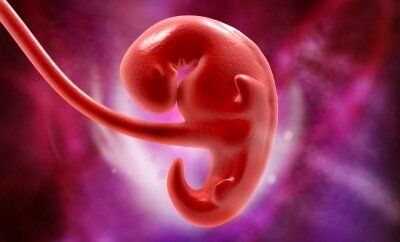
*Katie Hammond [2011] is doing an MPhil in Multi-Disciplinary Gender Studies. Picture credit: http://www.freedigitalphotos.net and dream designs.
How does biology intersect with society? A pioneering inter-disciplinary project at Arizona State University is looking at the issue from the perspective of embryo research.
The Embryo Project, directed by Jane Maienschein and Manfred Laubichler, brings together researchers from a variety of disciplines who look at the history, science and various issues surrounding the growing fields of embryology, development and reproductive medicine. The goals of the project include: university education, research and public outreach. One of the major products of the EP is the Embryo Project Encyclopedia. This was the major focus on my recent time at ASU as a visiting scholar and fellow of the project.
The EP Encyclopedia is an online open access encyclopedia with an enormous selection of what are called "found objects" such as photographs and lecture slides. Additionally, it contains thousands of vigorously reviewed articles on topics such as people, technology, concepts, law, you name it, of importance to embryology, development and reproductive medicine. The target audience of the EP Encyclopedia are those with a ninth grade to undergraduate level education. Importantly, articles are written in an accessible way, making science and other technical concepts clear - even to those without a science background.
My time at ASU was spent working amongst a group of individuals from a large variety of backgrounds. Among the five visiting scholars alone, there were backgrounds in history, biology, philosophy and sociology. I was drawn largely to the reproductive medicine emphasis of the project because of my PhD research on assisted human reproduction. My PhD research on Assisted Human Reproduction has made me acutely aware of the importance of understanding the social and regulatory implications of developing science and surrounding technologies. My time at ASU certainly opened my eyes to a new range of perspectives on this interaction. I have begun to consider other issues at this intersection for which the sociology has yet to be explored. For instance, it further peaked my interest in the sociological implications of new technologies of AHR such as oocyte cryopreservation (or egg freezing), a technology that is rapidly growing in popularity since the American Society for Reproductive Medicine declared it to be no longer experimental in 2012. Other issues include the use of embryos or humans eggs for research, such as cloning.
During my time at ASU, I learnt how to write for the EP Encyclopedia, reviewed preliminary drafts of other scholars' articles, took a course on the review and editing process of the articles, and learnt how to put a reviewed article on the web. My first EP Encyclopedia article was an entry on the Canadian Assisted Human Reproduction, 2004, a piece of legislation that is a predominant focus of my PhD research. Needless to say, writing a comprehensive and accessible EP Encyclopedia article is no easy task. Writing an article requires extensive research. Difficult scientific, legal, and other concepts and processes need to be broken down and articulated in a manner that is accessible to individuals who are not experts in the area.
The past few decades have witnessed much technological advancement in the fields of assisted reproduction, development and embryology. It is crucial for informed public opinion and policy-making that these advances are recorded accurately and that the information is widely accessible. The Embryo Project Encyclopedia is as a useful tool towards achieving these goals.
You can browse the Embryo Project Encyclopedia online here.
